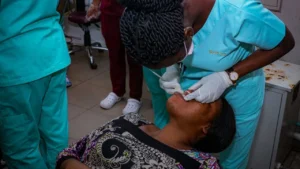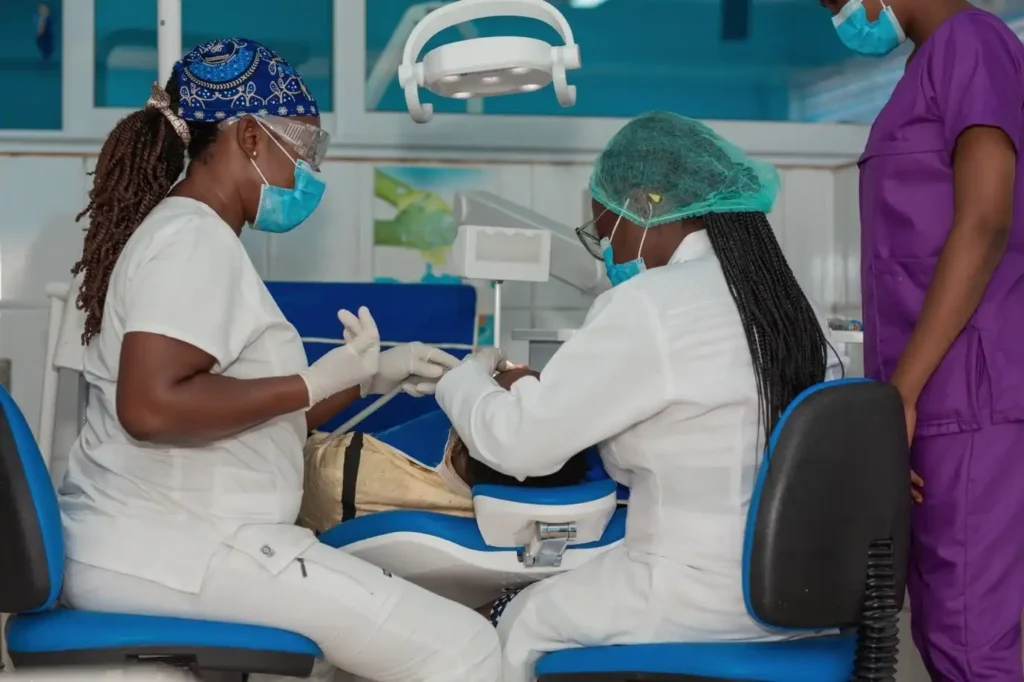Dental practices across the United States are grappling with a severe labor shortage that is significantly disrupting routine patient care, causing delays that can extend for several months. The shortage, which spans key roles such as dental hygienists, assistants, and front office staff, has been exacerbated by a sharp increase in patient demand—particularly from individuals who postponed dental visits during the peak of the COVID-19 pandemic.
Jeffrey Karen, a pediatric dentist based in South Weymouth and a trustee of the Massachusetts Dental Society, described the current workforce crisis as unprecedented in his two decades of practice. “This is pretty much the worst I’ve seen it,” Karen remarked, emphasizing that many dental procedures require an assistant and cannot proceed without one. As a result, some patients are forced to wait extended periods for routine appointments, depending on the capacity of individual clinics.
At Boston University Dental Health Center, for example, scheduling a basic teeth cleaning is nearly impossible before 2023—unless a cancellation opens up a slot. Kelly Marcinkewich, associate director of the center, said the pandemic prompted many staff members to abandon the dental field altogether. “We’ve seen a clear shift away from certain healthcare roles, and that’s contributed to a widespread staffing shortage affecting many dental practices, including ours,” she stated in an email. Marcinkewich also confirmed that patient volume has surged, as more individuals are now trying to book appointments they deferred during the earlier phases of the pandemic.
An Industry-Wide Crisis with National Implications
Pamela Maragliano-Muniz, a dentist practicing in Salem, Massachusetts, noted that while year-long delays may represent the worst-case scenarios, staffing shortages have become commonplace across the industry. “Everyone I know is struggling to hire,” she said. Dentists everywhere are dealing with reduced capacity, and it’s beginning to impact patient access on a national scale.
Backing up these local observations with data, Marko Vujicic, chief economist and vice president of the Health Policy Institute at the American Dental Association, called workforce shortages “issue number one” for dental practices across the country. He revealed that around 40% of dental offices currently have open staff positions, and 90% of those practices report extreme difficulty in finding qualified candidates. “That’s an astronomically high number,” Vujicic stressed. “It’s not something that’s going to be resolved quickly, and it’s already affecting patients across the board.”

Massachusetts Leads Recruitment Efforts for Dental Assistants
In Massachusetts, the dental community has started taking proactive steps to address the personnel shortfall. According to Karen, in order to operate dental offices at full capacity across the state, the number of licensed dental assistants would need to more than double—from approximately 9,500 to at least 19,000.
To close this gap, the Massachusetts Dental Society is preparing to launch a major awareness and recruitment campaign. The initiative aims to attract recent high school graduates into the field of dental assisting, which Karen believes is essential to preventing a broader access-to-care crisis. “There are plenty of assisting schools in our state,” he said, “but many of them can’t even fill their classes.”
The forthcoming campaign will include advertising on platforms popular among young people such as YouTube, TikTok, and Snapchat. Additionally, the Dental Society plans to collaborate with high school guidance counselors to raise the profile of dental assisting as a viable and rewarding career choice.
Karen emphasized that this is not just a workforce problem—it’s a patient care problem in the making. “The goal of what we’re trying to do with this whole advertising campaign is to prevent an access to care problem,” he said.
Pandemic Fallout and Changing Job Preferences
Experts agree that the COVID-19 pandemic accelerated a shift in career preferences, particularly among those working in healthcare-adjacent fields. Many workers, seeking improved work-life balance or safer environments, left positions in clinical and administrative dental roles and have not returned.
The impact has been particularly acute in dental offices, where close-contact procedures and long hours are standard. The result is a ripple effect: reduced staff leads to fewer appointments, which in turn increases patient frustration and delays essential oral healthcare.
Dental practices have attempted to compensate by offering higher wages and flexible schedules, but even these measures have not been enough to reverse the exodus. The shortages continue to put pressure on remaining staff, potentially accelerating burnout and further attrition.
A Widening Gap in Dental Access
The longer these staffing issues persist, the more severe the consequences for patients. Preventive care like cleanings and checkups are being postponed, increasing the likelihood of more serious dental issues down the line. For vulnerable populations—such as children, the elderly, and low-income individuals—the effects could be particularly damaging.
If practices cannot recruit enough personnel to meet demand, access to dental care may soon resemble the broader healthcare staffing crises seen in hospitals and long-term care facilities.
A Call to Action
Industry leaders are calling for more comprehensive strategies to rebuild the dental workforce and ensure sustainable access to care. Beyond social media campaigns, they suggest expanding training programs, offering scholarships, and creating career development pipelines to attract and retain young professionals.
In the meantime, patients are advised to schedule routine care as early as possible, anticipate longer wait times, and remain flexible when cancellations arise.
The dental industry, like much of healthcare, is still finding its way out of the shadows of the pandemic. Whether it can attract the workforce it needs to meet growing demand may ultimately determine how soon normalcy returns to America’s dental chairs.






